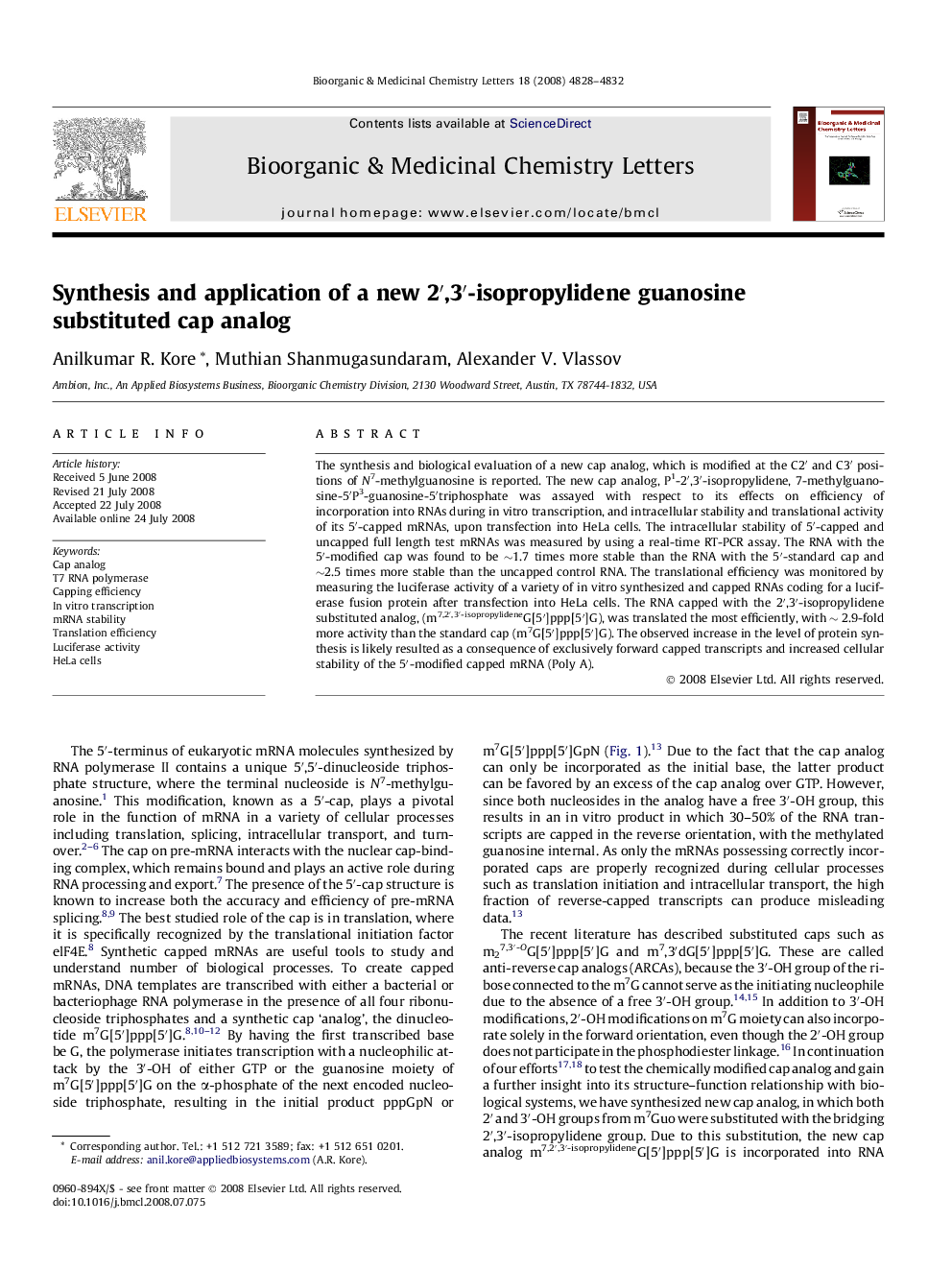| Article ID | Journal | Published Year | Pages | File Type |
|---|---|---|---|---|
| 1372826 | Bioorganic & Medicinal Chemistry Letters | 2008 | 5 Pages |
The synthesis and biological evaluation of a new cap analog, which is modified at the C2′ and C3′ positions of N7-methylguanosine is reported. The new cap analog, P1-2′,3′-isopropylidene, 7-methylguanosine-5′P3-guanosine-5′triphosphate was assayed with respect to its effects on efficiency of incorporation into RNAs during in vitro transcription, and intracellular stability and translational activity of its 5′-capped mRNAs, upon transfection into HeLa cells. The intracellular stability of 5′-capped and uncapped full length test mRNAs was measured by using a real-time RT-PCR assay. The RNA with the 5′-modified cap was found to be ∼1.7 times more stable than the RNA with the 5′-standard cap and ∼2.5 times more stable than the uncapped control RNA. The translational efficiency was monitored by measuring the luciferase activity of a variety of in vitro synthesized and capped RNAs coding for a luciferase fusion protein after transfection into HeLa cells. The RNA capped with the 2′,3′-isopropylidene substituted analog, (m7,2′,3′-isopropylideneG[5′]ppp[5′]G), was translated the most efficiently, with ∼ 2.9-fold more activity than the standard cap (m7G[5′]ppp[5′]G). The observed increase in the level of protein synthesis is likely resulted as a consequence of exclusively forward capped transcripts and increased cellular stability of the 5′-modified capped mRNA (Poly A).
Graphical abstractThe synthesis and biological evaluation of C2′ and C3′ disubstituted at m7Guo cap analog, that is, m7,2′,3′-isopropylideneG[5′]ppp[5′]G is reported.Figure optionsDownload full-size imageDownload as PowerPoint slide
